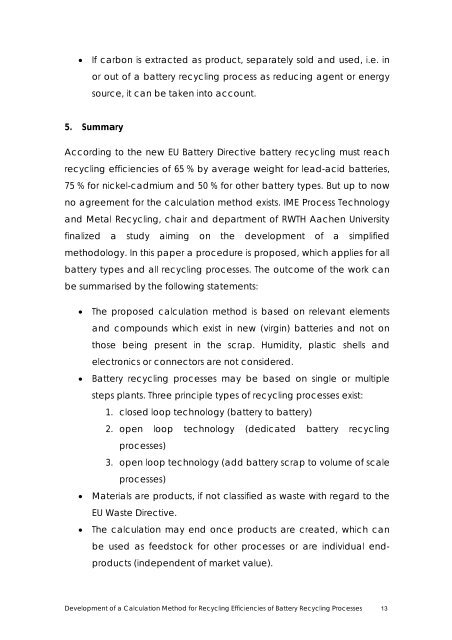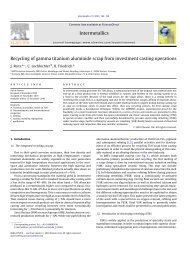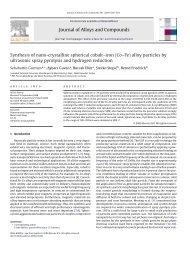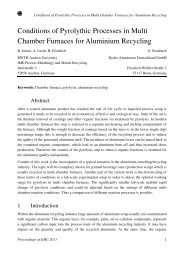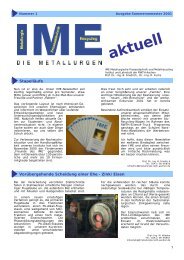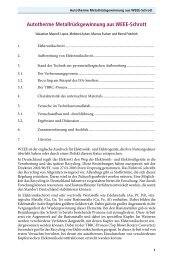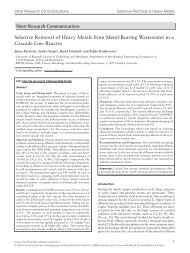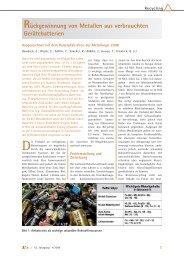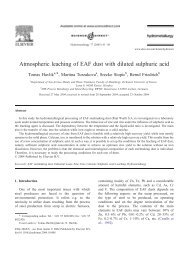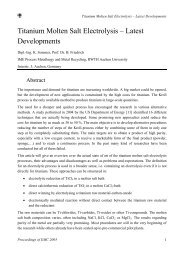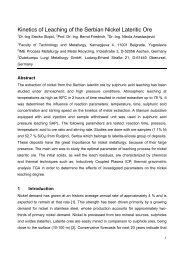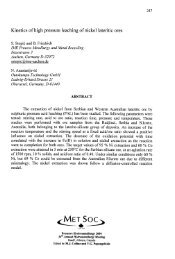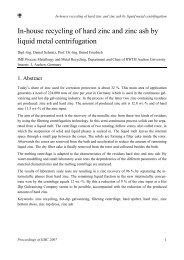Development of a Calculation Method for Recycling Efficiencies of ...
Development of a Calculation Method for Recycling Efficiencies of ...
Development of a Calculation Method for Recycling Efficiencies of ...
Create successful ePaper yourself
Turn your PDF publications into a flip-book with our unique Google optimized e-Paper software.
• If carbon is extracted as product, separately sold and used, i.e. inor out <strong>of</strong> a battery recycling process as reducing agent or energysource, it can be taken into account.5. SummaryAccording to the new EU Battery Directive battery recycling must reachrecycling efficiencies <strong>of</strong> 65 % by average weight <strong>for</strong> lead-acid batteries,75 % <strong>for</strong> nickel-cadmium and 50 % <strong>for</strong> other battery types. But up to nowno agreement <strong>for</strong> the calculation method exists. IME Process Technologyand Metal <strong>Recycling</strong>, chair and department <strong>of</strong> RWTH Aachen Universityfinalized a study aiming on the development <strong>of</strong> a simplifiedmethodology. In this paper a procedure is proposed, which applies <strong>for</strong> allbattery types and all recycling processes. The outcome <strong>of</strong> the work canbe summarised by the following statements:• The proposed calculation method is based on relevant elementsand compounds which exist in new (virgin) batteries and not onthose being present in the scrap. Humidity, plastic shells andelectronics or connectors are not considered.• Battery recycling processes may be based on single or multiplesteps plants. Three principle types <strong>of</strong> recycling processes exist:1. closed loop technology (battery to battery)2. open loop technology (dedicated battery recyclingprocesses)3. open loop technology (add battery scrap to volume <strong>of</strong> scaleprocesses)• Materials are products, if not classified as waste with regard to theEU Waste Directive.• The calculation may end once products are created, which canbe used as feedstock <strong>for</strong> other processes or are individual endproducts(independent <strong>of</strong> market value).<strong>Development</strong> <strong>of</strong> a <strong>Calculation</strong> <strong>Method</strong> <strong>for</strong> <strong>Recycling</strong> <strong>Efficiencies</strong> <strong>of</strong> Battery <strong>Recycling</strong> Processes 13


